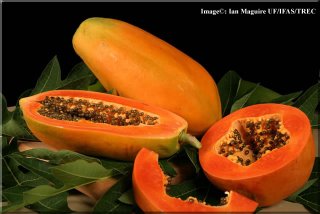The other day I was saddened to read an article on Bananot, an Israeli girl magazine, about botox injections. The author tells of her experience going to get the injection, her sadness at her lost youth, and finally – despite all the shortcomings of the process – the coveted award: a stranger in the street guessed her age to be five years less than she actually is.
I don’t know where to begin my arguments against this article; one has to applaud the author’s bravery at coming out and saying she got the injection. However, I see the fact that people are feeling comfortable to openly admit they get them as an indicator that these procedures have become more acceptable than before, and it’s quite possible that many women I see in Tel Aviv have gone through this. Which is why I’ll add my non-relenting, sanctimonious voice to the choir, and say things most of you have already heard, or said yourselves, in numerous occasions.
My main argument against botox is quite obvious, and simply involves the nature of the procedure: you’re basically injecting yourself with poison. You’re consciously and deliberatly introducing a dangerous, muscle-paralyzing poison into your very own precious body, for the purpose of, well, being something that some would define “pretty”. Have I already mentioned that botox is poison? The author seems to understand this, and nevertheless, the immediate effects on health somehow fail to register. She playfully tells us how one of her eyebrows “fell down” and was lower than the other, but this menacing occurrence does not trigger any deeper understanding about cause and effect. The fact that one might get sick if one drinks, say, ink, is easily acknowledged; why would introducing harmful substances through other means make you any better?
For some reason, this procedure scares me more than that old-timer pal, the facelift. Hideous as going under surgery to tuck in some face may seem, at least it’s expensive, and surgical, and you expect folks to give it careful thought before doing it (though the numbers of women getting plastic surgery, including facelifts, are getting alarmingly big). The botox craze is worse in the sense that it’s less expensive and the process itself is less lengthy. Of course, it is not cheap at all, and involves some readjustment of the face and some recovery, but all in all, the unbearable lightness of poisoning yourself makes everything seem so much more demonic somehow.
And why is that? the Weberian, Protestant-Ethos part of me is upset about the attitude that “easy fixes” are readily available for any inconvenience we encounter. Rather than thoroughly treating our wounds (or realizing they are not wounds at all) we stick cosmetic band-aids on them. Learning to be proud of our faces, which reflect the faces of your mothers, and grandmothers, and ancestors, is too much work. Yes, so much better for all involved if we just inject something. Observing how the corners of our eyes are lined from years of laughing with dear friends, and how our forehead is lined from years of thinking, and concentrating, and worrying about our loved ones, is too much work. Much better for us to erase our past and experiences. The idea that technology will be right next to us, lending us a helping hand whenever life becomes a tad more complicated, propels us to stop our inner search, to stick with the easy solution, to take the proverbial blue pill.
And what is this valuable asset that we wish to recreate by injecting poison into our face? Yes, of course, it’s youth – that wonderful, carefree time, when we were completely helpless in any way that could shape our future. That time when we were cruel to each other, incommunicado with our parents, busy conducting world wars across the social food chain in school, and devoid of any resources for taking control of our lives. Is that the period we wish to relieve? Is this equation of women with teenagers meant at making them as helpless and lost as teenagers? Ladies, do think of your life in your thirties, forties, fifties, sixties; yes, it’s more complex. You have jobs, and families, and dilemmas, and bills, and bureaucracy. But you can take matters into your own hands, and use your wisdom and experience (whose traces are on your wise, beautiful face) to solve your problems. With erasing the signs of your wisdom and experience comes a symbolic, and perhaps more than symbolic, negation of these very experiences and their value to your life. You once again relinquish control and place yourself in the hands of a dangerous chemical, which takes away your control over something which is extremely close to your personality: your facial expressions. You relinquish control of your face muscles, echoing the time when our faces were wrinkle-free and our control over our circumstances, relationships and future was nil.
The ultimate “award” for this dangerous and futile exercise in self-weakening is given in the form of a compliment from a stranger. If we are incomplete and unhappy until some man we don’t know tells us we look thirty-five and not a day older, what does it say about us? What does that say about our relationship with ourselves and with the loved people who have walked all these erased years beside us? What does that tell us about the source and strength of our self esteem? Self esteem, self empowerment, pride in the self, does not come in a plastic container; “for if that which you seek, you find not within yourself, you will never find it without”.
What to do, then? The most important thing is to take pride in who you are, in your age, in your experiences. Easier said than done in an era of aggressive advertisements, but important. No one, apparently, will facilitate this for us – we must do it ourselves. When people ask you how old you are, for heavens’ sake, tell them your right age. When you look at your lines in the mirror, acknowledge the joys and sorrows that shaped them, like small symbolic tattoos marking the stations of change and shift in your life.
This does not mean letting your body weaken. If we want to live and love on this planet, we must do whatever we can to be healthy and strong. The work needs to be done; the children need to be raised; the ideals need to be fought. To do that, you’ll need a robust musclo-skeletal system, a strong digestive system, clean and healthy lungs. Eat whole, organic, fresh natural foods. Cook for yourself and your family. Take a walk, or a swim, or a class on a regular basis. Forge a strong relationship of cooperation between your mind and your body.
And finally, want to be pretty? Your food can give you a hand with that. There is a variety of great resources out there on natural, harmless substances that can heal and enrich your skin. Two of the better books I use are Rosemary Gladstar’s Herbal Healing for Women and Dina Falconi’s Earthly Bodies and Heavenly Hair. This doesn’t have to be a cumbersome regime; you can use some of the vegetables and fruit you cook with to get the benefits.
Two good examples are papaya and lemons, both good for a combination/oily skin complection. Making tchina, vegetable salad, or anything that needs lemon juice? Take a piece of the lemon and slather its pulp over your face. Rinse out in ten minutes. Papaya, which includes the wonderful enzyme Papain, is even better, but be sure to rinse it off in five minutes, as the active ingredients are quite strong. If your skin is sensitive, there’s a variety of organic, hypo-allergenic products out there, and many of them do not experiment on animals (for a great list of cruelty-free products in Israel, see here). The lemon and papaya treatments are tried and true methods for mattifying the skin, cleaning the pores and absorbing excess oils. Naturally (no pun intended), they do not wipe off your laughter or worry lines. Assuming that as a live, vibrant woman, you occasionally worry, and sometimes laugh, we’ll just have to accept you, and your beauty, and your experience – the way you are.







